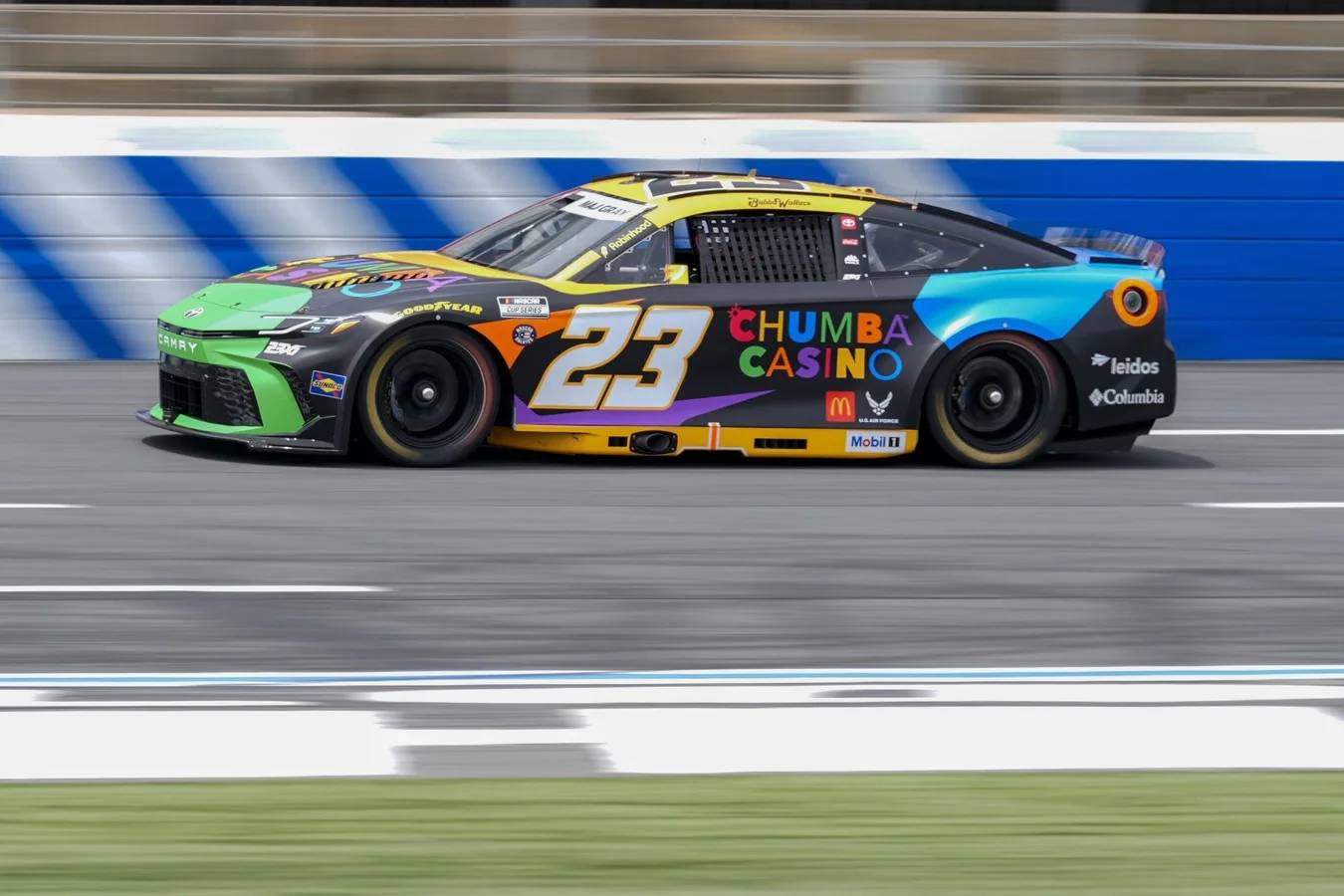Bubba Wallace calls for NASCAR to boost Next-Gen car horsepower, urging the sport’s leaders to implement significant changes for more thrilling competition. Speaking during a recent media session, the 23XI Racing driver pushed for increased engine power as a solution to persistent passing difficulties faced since the introduction of the Next-Gen car in 2022.
Bubba Wallace Advocates for a Horsepower Increase
Since the Next-Gen era began, drivers and teams have regularly voiced concerns about how the vehicle’s aerodynamic design and durable tires have tightened the racing field, making overtaking tougher and races less dynamic. Wallace, who drives for 23XI Racing, has become a prominent advocate for revising the car’s regulations, suggesting that the current 670-horsepower package is insufficient to produce the action fans expect. Instead, he believes that returning to levels closer to 750 horsepower, or potentially higher, would restore excitement and deliver better racing across the field.
Wallace’s stance is clear, emphasizing that small incremental adjustments to horsepower are unlikely to produce meaningful results and may simply serve as temporary fixes. He emphasizes the importance of a bold, single-step change in the engine’s power, rather than cautious, fragmented upgrades that require ongoing reassessment.
“I mean, we’re 670 now, right? I think if you go in small increments, it’s just like sticking a Band-Aid on something. I’m not asking for [900] but 750 at least, or higher, just to see if it’s as easy and somewhat cost-efficient as they’re saying, and I think I’m reading the comments right, then why not?”
—Bubba Wallace, media session at Nashville

Pushing for Immediate Action Over Extended Testing
Beyond proposing a specific horsepower target, Wallace argued against the need for lengthy testing programs before rolling out changes. He believes NASCAR should take a proactive approach—adopting newly configured engines at an upcoming short-track event to gain immediate feedback and real-world insight, rather than deliberate indefinitely with more trials and small-scale tests.
“Have a test, no, not even a test. Why don’t we all just show up somewhere, wherever our next short track is, and give it more horsepower? If it’s a shitshow, then go from there. But you’re going to get a 720 package, and one driver is going to be like, ‘Oh, I thought it was pretty good! We’re done! Good job!’ No, that’s not the case. So, we need big moves here. What are we scared of?”
—Bubba Wallace
The driver, representing TRD, expressed frustration with the pace of change, suggesting that the sanctioning body should not wait for the “perfect” solution or be held back by fear of failure. According to Wallace, a decisive move could provide the clarity needed about how additional horsepower would impact race quality, rather than settling for marginal improvements with uncertain effects.
Challenges to NASCAR’s Change Timeline
In the extended discussion, Wallace addressed a major reason for NASCAR’s hesitation to boost engine output. He pointed out that ongoing delays have often been attributed to waiting for a new manufacturer to enter the championship. However, with no new brands appearing on the horizon, he believes there are no valid obstacles left to prevent changes in the rulebook, and thus NASCAR should act without further postponement.
“We’ve been saying it for years, we want more horsepower, and we’ve always been told we’re waiting on other manufacturers to come in and they ain’t in! So, let’s do something. Yeah, we need to think.”
—Bubba Wallace
Longtime observers note that even figures like Elton Sawyer have publicly acknowledged the topic, yet official adjustments have yet to materialize. Wallace’s remarks reflect growing impatience within the driver community over the pace of innovation, especially given how long these suggestions have been circulating.
Momentum and Opportunity in NASCAR
Wallace further argued that the sport currently enjoys strong momentum, supported by lucrative media agreements, expansion into a wider variety of tracks, and diverse ventures beyond racing alone. Given these favorable circumstances, he believes now represents an ideal window for NASCAR to implement game-changing technical reforms and reignite excitement among participants and spectators alike.
“We have all the momentum on our side with our sport right now, right? I think bringing something exciting, I think they need to look at it from an exciting standpoint than a worrying standpoint.”
—Bubba Wallace
Though Wallace is not the first to make these recommendations—nor likely the last—his passionate insistence aligns with the broader sentiment of key figures and stakeholders within the garage. NASCAR’s ambivalent approach to adjusting the Next-Gen vehicle is increasingly being challenged by drivers who believe that larger risks may yield the big rewards the series seeks.
As discussions continue among officials, manufacturers, and teams, fans and drivers will be watching closely to see whether the calls for higher horsepower in Next-Gen cars are finally answered. With NASCAR’s next move potentially shaping the future of competition, Wallace’s challenge serves as a reminder that a bold technical leap could be the spark needed to invigorate the racing product for everyone involved.
